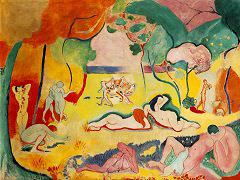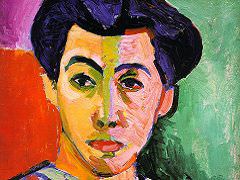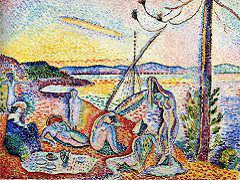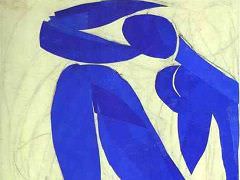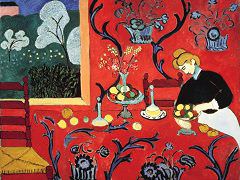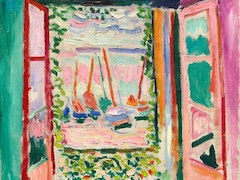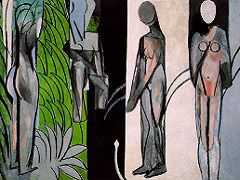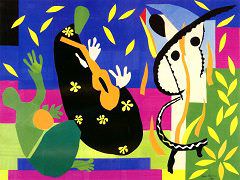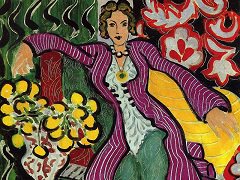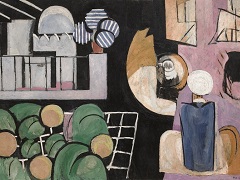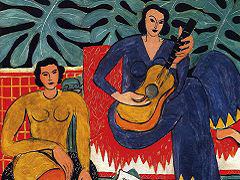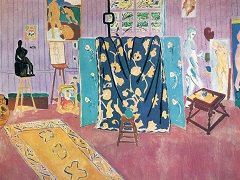Sunlight in the Forest, 1914 by Henri Matisse
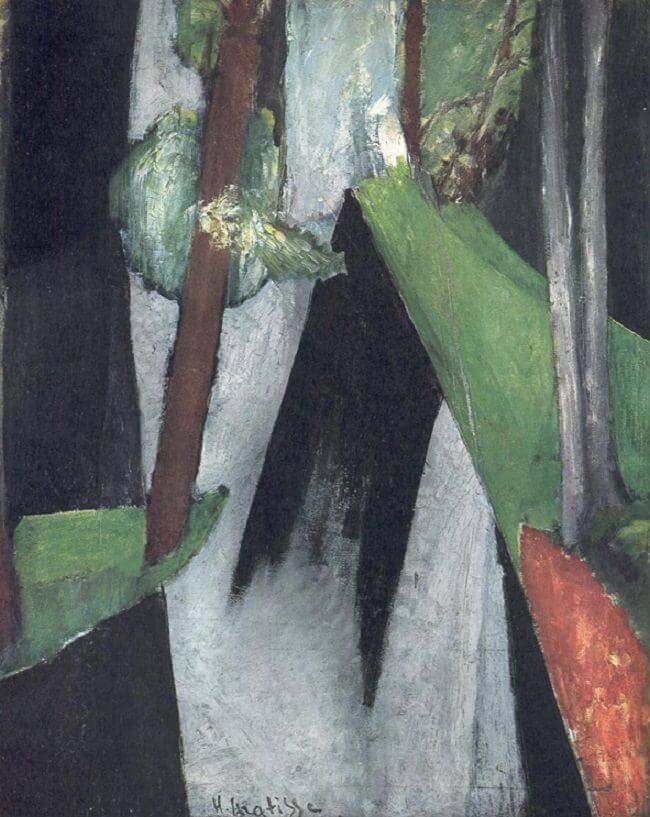
Sunlight in the Forest is the most abstract of Matisse's landscapes, in part a Neo-Cubist study in a spirit similar to Goldfish. It has a remarkably high vantage point, and in this respect it offers certain analogies with a totally different picture, the early Interior with Harmonium, a picture that can reasonably be called Proto-Cubist even though Matisse did not subsequently chose to follow that road with Picasso and Georges Braque. The most useful comparison for elucidating the present picture is with The Path in the Bois de Boulogne, a similar subject treated in a more conventional, post Cezanne way.
No detailed explanation of the parts of this picture can be completely satisfactory. Possibly it should be studied as a view seen from a single point in space; possibly, in the Cubist way, as one seen from several. Nor is it clear which parts of the picture are to be read as in sunlight and which are to be taken as in shadow. The path itself is the long, central, pale-hued element, but whether the massive dark diagonal that brutally intersects it should be seen paradoxically as the ray of sunlight filtering through the trees of an otherwise somber forest interior, or whether it is an incidental patch of intense shadow in an otherwise moderately luminous scene, is not clear. Given the unresolved ambiguities of Goldfish, the possibility that the artist meant the picture to have alternate interpretations cannot be ruled out entirely. In any case, the picture remains unresolved, a kind of battlefield on which contradictory tendencies are fighting against themselves with no decisive result one way or another. In many situations this would be a devastating critique, but in this case it is not. The forceful abstract design provides the picture with many positive qualities, and the unresolved tensions and uncertainties of how to interpret the illusionistic aspect of the picture retain our attention for a protracted period.

